SB visits… Bruichladdich Distillery, Islay
By Georgie CollinsGale-force winds, freezing rainstorms, turbulent plane journeys and rocking boat rides… all of the things we expected but didn’t experience on our trip to the Bruichladdich Distillery on the Hebridean island of Islay this month. Talk about rolling out the red carpet.
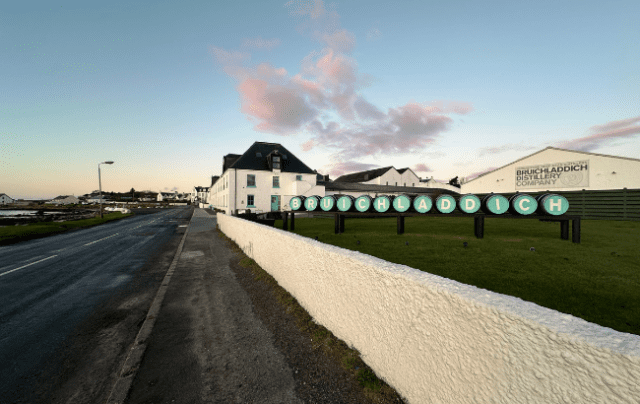
Our three-day blue-skied trip to Islay was at the courtesy of Bruichladdich Distillery, the makers of the eponymous whisky brand, as well as its single malt stablemates Port Charlotte and Octomore, and The Botanist Gin.
The distillery is located on the western shore of Loch Indaal, a scenic stretch that overlooks the North Atlantic Ocean. It is recognisable by the pops of its signature colour – a shade of blue said to be reminiscent of the colour of the waters that surround Islay on rare sunny days such as the ones we visited on.
Bruichladdich Distillery is known for its commitment to terroir, transparency, and Islay-focused processes, including maturing and bottling all its whisky on the island.
Our trip started at the beginning of the Islay-focused process, with a visit to the distillery’s water source located on the borders of Octomore Farm. The Octomore Spring is located just two miles from the distillery, and is used in the bottling process for the distillery, while its mashing water is retrieved from An Torran, which is part of the Bruichladdich loch.
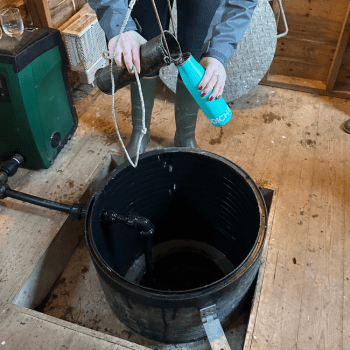
The spring’s water is unique, boasting a high silica content, and is the only water of this type available on the island. Research into this water by geologists, and the gneiss rock through which it flows, has been extensive, and has returned some extraordinary hypothesis, one of which is that Islay was once joined to the South American coast 750 million years ago – at the town in Peru with the same name.
A sense of place
Bruichladdich uses 100% Scottish barley for its single malts, with more than 50% of that barley grown on Islay. However, it was not always the case that barley grew on Islay. In fact, it was Bruichladdich that helped to pioneer the growth of the grain on the island, which was previously not considered to offer a beneficial environment to growing this kind of crop.
However, after conversations with the company’s farming partners, the experiment to grow the crop was underway, and now the brand works with 20 local farming partners on the island to source this essential raw ingredient.
Sourcing the barley locally does not only reduce the brand’s transport emissions, help develop new soil-improving practises, avoid monoculture, and promote climate happy crops, but it also hugely impacts the flavour profile of the whiskies that come out of the distillery.
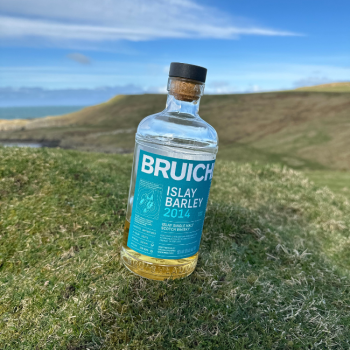
This was demonstrated to us via a tasting while overlooking one of the barley fields currently growing this year’s crop. Celebrating the ‘purest expression of terroir’, the Bruichladdich Islay Barley 2014 that we sampled is the latest vintage of the unpeated locally-grown single malt. It is fully traceable from farm to glass, and was matured in a combination of first-fill Bourbon casks, Sherry butts and second-fill wine casks, balancing the influence of the oak with the locally grown barley.
Reminiscent of a malty digestive biscuit with a slathering of apricot jam, it is smooth and juicy with hints of salinity that make the mouth water.
Bruichladdich is also known for its experimentation with peat. Both Port Charlotte, and more so Octomore, demonstrate the power peat can play on the palate. A flavour profile that is perhaps not for everyone, usually myself included, but somehow Port Charlotte’s Heavily Peated portfolio has the power to bring complexity without choke-holding the palate with smoke.
Down in the bay of Port Charlotte where the whisky gets its name, with wild seals for company, we sampled another 2014 barley vintage. The 50% ABV single malt, made with barley sourced from eight Islay farming partners and peated to 40PPM (phenol parts per million), the rich, juicy whisky reminded me of charred barbecued peaches. It was aged for seven years in first-fill Bourbon casks, second-fill virgin oak, and second-fill wine casks, giving it a light amber hue.
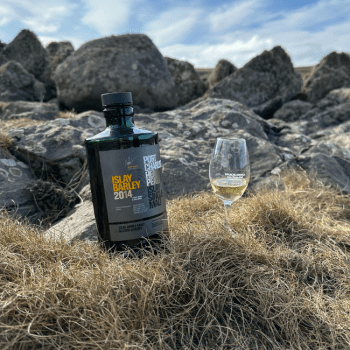
Distillery tour
A tour of where the magic happens came next, and it was led by Eva MacIntyre, the brand’s junior brand ambassador, and perhaps the most knowledgeable 19-year-old I’ve ever encountered in the industry.
MacIntyre began with a history of the distillery, and a quick overview of the machinery in place.
Bruichladdich is both an old and new brand at the same time. Founded in 1881, it was initially used for creating whiskies to be blended and was owned by Jura producer Whyte & Mackay. However, the firm felt it unnecessary to own two island brands and so mothballed Bruichladdich in 1994, where it lay dormant until its resurrection in 2001, when it was purchased by wine merchant Mark Reynier. The brand was eventually purchased by Rémy Cointreau in 2012 for £58 million (US$74.8m).
Due to the brand’s 19th-century origins, much of the machinery is not quite as new as many might expect. In fact, much of it is the original Victorian equipment.
The mill, for example, is one of the last belt-driven mills in Scotland and used to be serviced by MacIntyre’s step-grandfather, while the mash tun was built in the distillery’s founding year, and is made from cast iron. It is also uniquely open topped.
“Every drop of whisky that has been made here has been in this mash tun,” MacIntyre noted, “which I just think is so impressive. The stories that this mash tun could tell…” she mused.
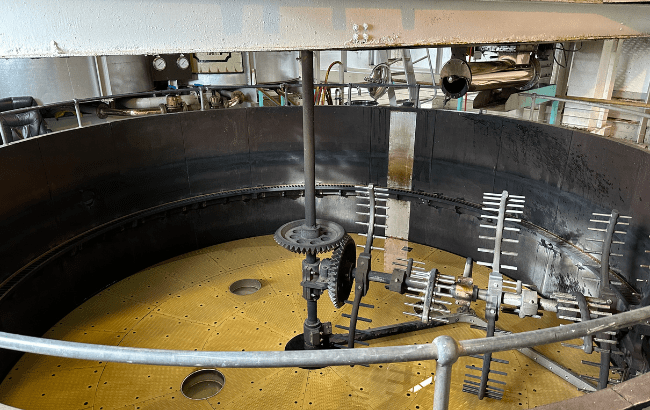
As a result of being an open-topped mash tun, the mash is required to be put through four waters to cover the additional evaporation. The first three waters are for mashing, while the fourth is for ‘sparging’, which means to wash out all the sugars from the malted barley, creating the wort.
From the mash tun, the wort is transferred into the six wooden washbacks in the adjacent room. Only one of these is an original washback, while the others, all larger, are newer.
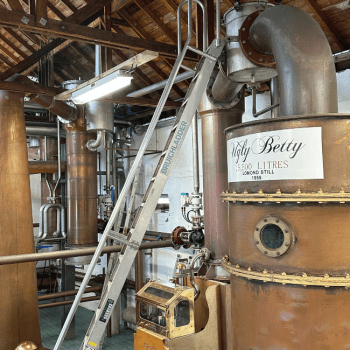
The tour finally moved into the still room, where both the brand’s whiskies and gin are distilled. Considering the capacity of this distillery has – making approximately 1.5m litres of pure alcohol per annum – this room is relatively small, with two wash stills and two spirit stills, and one further Lomond pot still – a defunct experimental cross between a Coffey and a pot still – affectionally known as Ugly Betty, used for making The Botanist Gin.
The Botanist Gin
Bruichladdich has ensured that its gin has much of a sense of place as its brown spirits. The team looked to ‘capture the essence of Islay’ with this gin by using as many locally foraged botanicals as possible, making it entirely unique to the island.
The brand settled on 22 hand-foraged local botanicals that provide the gin with layered complexity. They are sourced by the brand’s in-house foragers, Jim Donaldson and Kate Hannett, who took us on a demonstration of their roles on the island, pointing out the potential to find botanicals – and edible ones at that – everywhere.
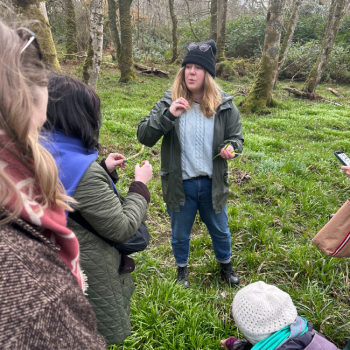
During this demonstration, the team touched upon The Botanist Foundation, which promotes the conservation, biodiversity and sustainability of Islay’s plants and wildlife by means of grants and memberships to the benefit of residents and visitors of the island and beyond.
One of the projects included in the foundation is the part-funding of a PhD through the UK Centre for Ecology & Hydrology, exploring the genomics of the threatened native Islay juniper with the aim of informing its future management in the UK.
Furthermore, the foundation offers financial support for applicants living on Islay and wishing to study and pursue careers relevant to the ethos of the foundation, and also offers funding to organisations working in the fields of conservation, biodiversity and sustainability.
Cocktails in the wild
To demonstrate the breadth and versatility of the portfolio, we were joined on the trip by William Tombe, the brand academy ambassador, who provided us with a selection of cocktails that highlighted each of the spirits in a variety of ways.
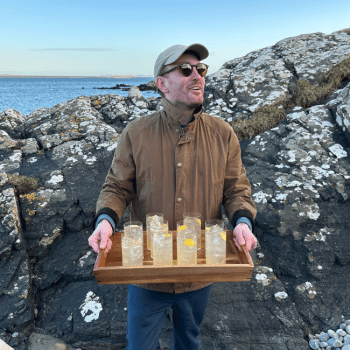
Following our distillery tour, we were led down to one of the local beaches a short walk from the production site for a round of Botanist Highballs – a cocktail for the G&T lover with a fruitier twist. This refreshing serve is made with:
- 30ml The Botanist Islay Dry Gin
- 20ml Grapefruit juice
- 15ml Simple syrup (or to taste)
- Premium soda water
- Orange peel
After our foraging expedition, we were greeted with a tray of Red Snappers – the gin variation of a Bloody Mary – which offered an umami hit made with:
- 50ml The Botanist Islay Dry Gin
- 1 Can of fellow B Corp-certified Longbottom & Co Virgin Mary tomato juice
- Vampire Botherer hot sauce, to taste
- Sea salt and Tajín for rim
- A splash of Octomore whisky
- Garnished with cherry tomato and celery
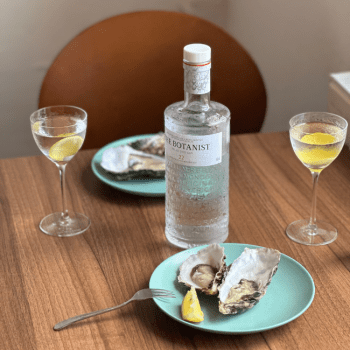
Demonstrating The Botanist in its purest form, Tombe had pre-batched a bottle of ice-cold Martini that was served to us alongside a lunch of freshly-shucked oysters at the island’s Oyster Shed, all of which were presented in a variety of forms: as they come; with mignonette dressing; and deep-fried.
This Dry Martini was made with extra-dry Cocchi vermouth and served in the brand’s custom Nick & Nora glassware. Martinis are, of course, a very personal thing, but to make one to The Botanist’s specification, you will need:
- 75ml The Botanist Islay Dry Gin
- 15ml Dry vermouth (chilled from the fridge)
- Garnished with a lemon peel twist
Additional cocktails were also served alongside a dinner cooked privately for us by the team at award-winning Glasgow restaurant, Fallachan, which demonstrated some extraordinary ways in which the brand’s portfolio can be included in cookery, including in an Octomore sourdough.
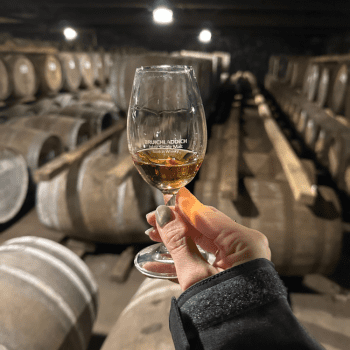
Tours and experiences similar to the one we experienced are available to visitors of the distillery, with prices starting from £25 (US$32) for a guided distillery tour, up to £75 (US$97) for a Bruichladdich Experience tour, which takes guests behind the scenes of the distillery, guiding them through the process of crafting the whisky and gin, before venturing to Warehouse 6 for an exclusive cask tasting session, where guests will sample three of the producer’s finest whiskies, straight from the barrel.
Will you be lucky enough to sample the Octomore whisky that boasts the highest PPM level of 309.2 straight from the cask like we did? Who knows. But whatever liquid lands in your glass is likely to be a treat.
Related news
US tariffs cost Scotch whisky £20m a month
